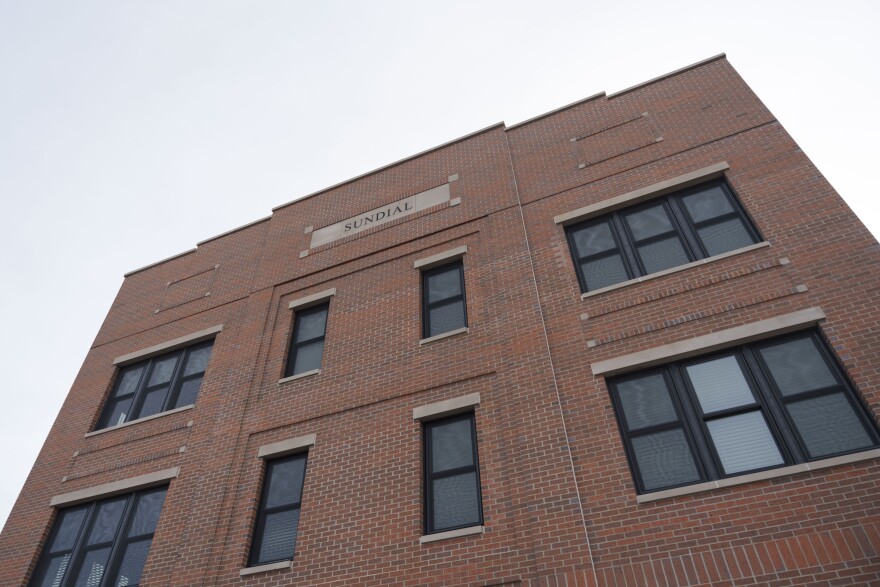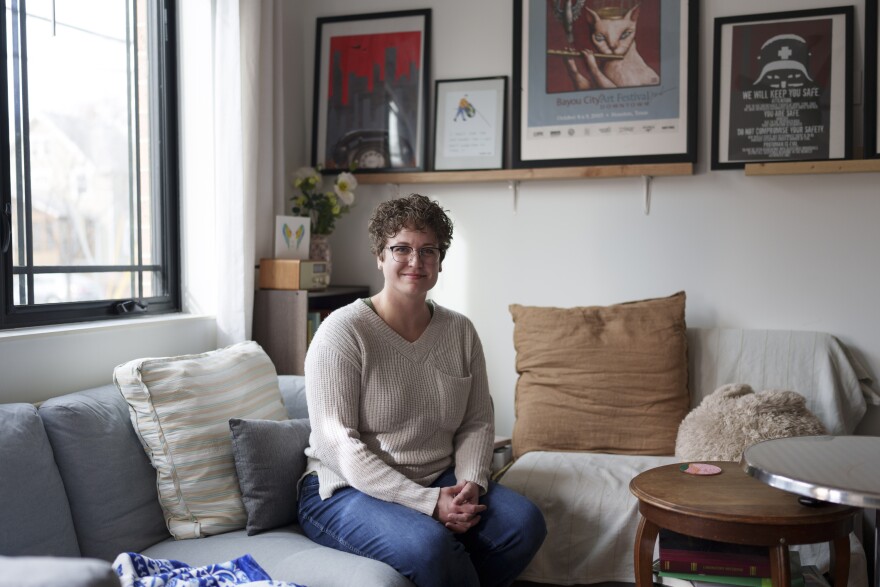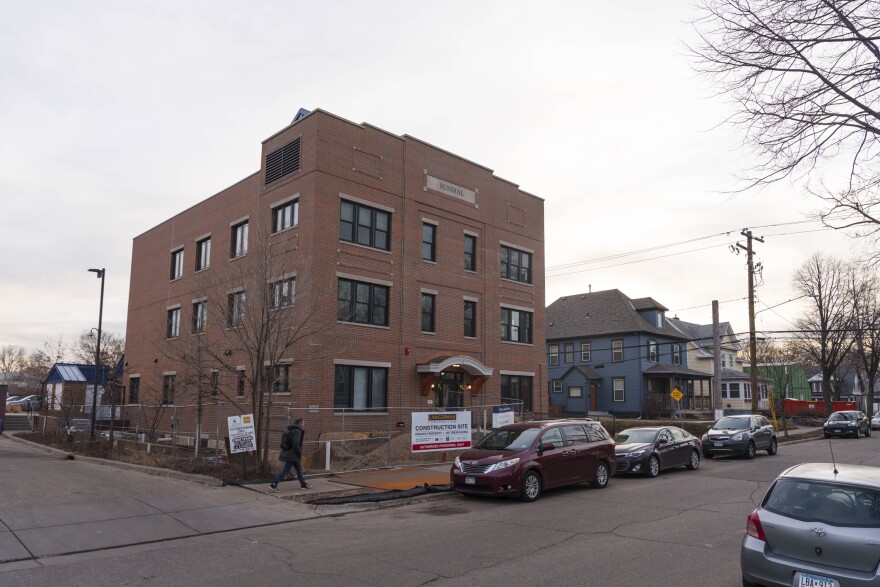America is facing a housing crisis.
The U.S. is short millions of housing units. Half of renters are paying more than a third of their salary in housing costs, and for those looking to buy, scant few homes on the market are affordable for a typical household.
To ramp up supply, cities are taking a fresh look at their zoning rules that spell out what can be built where and what can't. And many are finding that their old rules are too rigid, making it too hard and too expensive to build many new homes.
So these cities, as well as some states, are undertaking a process called zoning reform. They're crafting new rules that do things like allow multifamily homes in more neighborhoods, encourage more density near transit and streamline permitting processes for those trying to build.
One city has been at the forefront of these conversations: Minneapolis.
That's because Minneapolis was ahead of the pack as it made a series of changes to its zoning rules in recent years: allowing more density downtown and along transit corridors, getting rid of parking requirements, permitting construction of accessory dwelling units (ADUs), which are secondary dwellings on the same lot.
And one change in particular made national news: The city ended single-family zoning, allowing two- and three-unit homes to be built in every neighborhood.
Researchers at The Pew Charitable Trusts examined the effects of the changes between 2017 and 2022, as many of the city's most significant zoning reforms came into effect.
They found what they call a "blueprint for housing affordability."

"We saw Minneapolis add 12% to its housing stock in just that five-year period, far more than other cities," Alex Horowitz, director of housing policy initiatives at Pew, told NPR.
The researchers also examined what kind of housing was built. They found that for all the hubbub about duplexes and triplexes in former single-family-only areas, very few have been built. One reason is that they still had to be the same size as a single-family home, making them less feasible to build.
Instead, the vast majority of new housing was in midsize apartment buildings with 20 or more units.
"The zoning reforms made apartments feasible. They made them less expensive to build. And they were saying yes when builders submitted applications to build apartment buildings. So they got a lot of new housing in a short period of time," says Horowitz.
That supply increase appears to have helped keep rents down too. Rents in Minneapolis rose just 1% during this time, while they increased 14% in the rest of Minnesota.
Horowitz says cities such as Minneapolis, Houston and Tysons, Va., have built a lot of housing in the last few years and, accordingly, have seen rents stabilize while wages continue to rise, in contrast with much of the country.
In Houston, policymakers reduced minimum lot sizes from 5,000 square feet to 1,400. That spurred a town house boom that helped increase the housing stock enough to slow rent growth in the city, Horowitz says.
Allowing more housing, creating more options
Now, these sorts of changes are happening in cities and towns around the country. Researchers at the University of California, Berkeley built a zoning reform tracker and identified zoning reform efforts in more than 100 municipal jurisdictions in the U.S. in recent years.
Milwaukee, New York City and Columbus, Ohio, are all undertaking reform of their codes. Smaller cities are winning accolades for their zoning changes too, including Walla Walla, Wash., and South Bend, Indiana.
Zoning reform looks different in every city, according to each one's own history and housing stock. But the messaging that city leaders use to build support for these changes often has certain terms in common: "gentle density," building "missing middle" housing and creating more choices.
Sara Moran, 33, moved from Houston to Minneapolis a few months ago, where she lives in a new 12-unit apartment building called the Sundial Building, in the Kingfield neighborhood. The building is brick, three stories and super energy efficient — and until just a few years ago, it couldn't be built. For one thing, there's no off-street parking.

"It was exactly what I was looking for," Moran says of her 450-square-foot space, on a cold but sunny day in January. "I specifically wanted a smaller apartment because it takes less time to maintain. You can spend more time traveling because you're not paying as much for a big apartment, and then it's a little easier to live in whatever neighborhood you like."
Now, she rides her e-bike out her patio door, and there's a bus stop on the corner and a bakery next door. "There's just so much I can do in terms of walking to things, biking to things," Moran says, adding that she hasn't biked in sub-10-degree temperatures just yet. "I think I might use that bus if it stays under 10 degrees long."
The Sundial is the sort of building many cities want more of: housing that offers options for people at different income levels and different stages in their lives, in neighborhoods that already have amenities like restaurants and transit routes.
Meg McMahan, planning director for the city of Minneapolis, says the Sundial is a good example of how these reforms can make more housing units possible in more places.
It's no accident that throwing out the parking rules was vital to the Sundial's construction. "The elimination of parking requirements has been the most effective regulatory reform we have made," McMahan says.
"We're really dealing with outdated and inequitable regulations"
Cities' zoning rules often stand in the way of building much new housing.
A 2019 analysis by The New York Times looked at 11 U.S. cities and suburbs and found that in most of them, 75% or more of the residential land is zoned to allow only detached, single-family homes. No rowhouses, no apartments. In Connecticut, researchers found that three-unit homes are permitted by right on just 2.5% of the state's land and that nine towns allow only single-family housing.
"We're really dealing with outdated and inequitable regulations that in too many places really have choked housing supply," says Angela Brooks, president of the American Planning Association, which has made zoning reform one of its top priorities.
Zoning regulations can be exclusionary in several ways, says Nolan Gray, an urban planner and the author of the book Arbitrary Lines: How Zoning Broke the American City and How to Fix It.
"If you look at the origins of policies like single-family zoning, they were fairly explicitly designed to segregate cities both on the basis of socioeconomic status and then, of course, race," he says. "The ability to determine what type of housing can be built where is the ability to determine who gets to live where. And so if you say, well, 'You're only allowed to live here if you can afford a detached single-family home on a 7,500-square-foot lot,' you're excluding a lot of people."

Gray is also research director at California YIMBY, a group that advocates for more housing. He's glad to see several cities in the Midwest and the South take on reform efforts like those underway in California, before their housing prices skyrocket.
"Most American cities and most American states have rules on the books that make it really, really hard to build more infill housing," he says. "So if you want a California-style housing crisis, don't do anything. But if you want to avoid the fate of states like California, learn some of the lessons of what we've been doing over the last few years and allow for more of that infill, mixed-income housing."
California is among those taking on zoning reform at the state level, in recent years passing lots of legislation to address the state's housing crisis, including a law that requires cities and counties to permit accessory dwelling units. Now, construction of ADUs is booming, with more than 28,000 of the units permitted in California in 2022.
Some zoning reform efforts have hit roadblocks, however. Changes to allow denser housing in Montana and Austin, Texas, have been blocked by judges after lawsuits from homeowners. And in Minneapolis, part of the comprehensive plan that put an end to single-family zoning is on hold after a judge ordered an environmental impact review. The city is appealing the decision and asking the state legislature to change the law.
Some states are making it harder to bring legal challenges to these reforms on the basis of environmental impact reviews, says Vicki Been, faculty director at the NYU Furman Center for Real Estate and Urban Policy.
"You're seeing states — California, Oregon, Washington — saying you can't challenge an environmental impact review on the basis of traffic congestion, which is just a very difficult analysis to do," says Been.
And the national housing picture is starting to change. At least half a million apartments were completed last year, and nearly 1.7 million housing units are currently under construction. Rents are starting to level off.
"Mountains of minutiae that matter"
Jim Kumon and his wife, Faith, are the developers who built the Sundial Building where Moran lives. The Kumons live in the building now, too, with their children.
Kumon also happens to be a zoning connoisseur and has consulted with cities including neighboring St. Paul, which passed a major overhaul of its zoning code in October. He says St. Paul learned some things by watching the implementation in Minneapolis, especially when it comes to 1-to-6-unit buildings.

For instance, he says, on a lot that already has a single-family home on it, it's far easier to put a duplex in the backyard than to build a new triplex where the house is standing. So if you want to encourage more lots with three units, the code should allow different formats.
Kumon says that whenever the legal challenge is resolved, Minneapolis will be able to learn from the other cities that have followed its lead. And while zoning can be a weedy topic, it's a vitally important one, says Kumon.
"There are so many things we talk about that don't actually move that meter" to produce housing in the U.S., he says. "This is one of those thankless mountains of minutiae that matter. This really matters."
Copyright 2025 NPR



